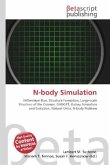Please note that the content of this book primarily consists of articles available from Wikipedia or other free sources online.Vega is the brightest star in the constellation Lyra, the fifth brightest star in the night sky and the second brightest star in the northern celestial hemisphere, after Arcturus. It is a relatively nearby star at only 25 light-years from Earth, and, together with Arcturus and Sirius, one of the most luminous stars in the Sun''s neighborhood. Vega has been extensively studied by astronomers, leading it to be termed, "arguably the next most important star in the sky after the Sun." Historically, Vega served as the northern pole star around 12,000 BC and will do so again at 13,727 AD when the declination will be +86°14''. Vega was the first star, other than the Sun, to have its photograph taken and the first to have its spectrum photographed. It was also one of the first stars to have its distance estimated through parallax measurements. Vega has served as the baseline for calibrating the photometric brightness scale, and was one of the stars used to define the mean values for the UBV photometric system.
Bitte wählen Sie Ihr Anliegen aus.
Rechnungen
Retourenschein anfordern
Bestellstatus
Storno








